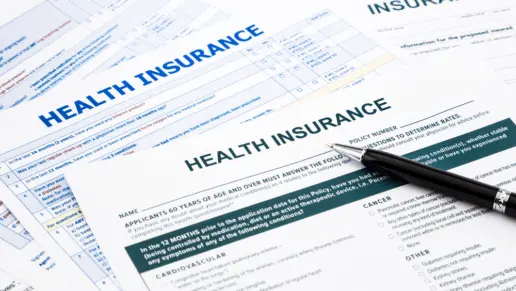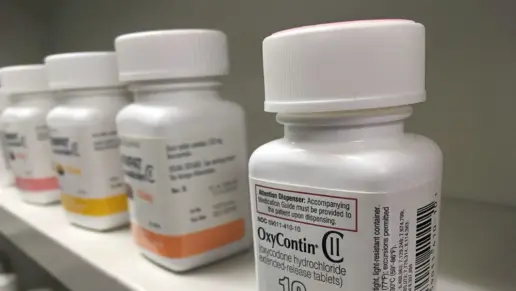What Are Levels of Care in Addiction Treatment?
The American Society of Addiction Medicine (ASAM) created a system to give providers, as well as individuals seeking addiction treatment, a simple way to determine the intensity of treatment that is needed. ASAMs system involves five levels of care for drug rehab programs which shape the recommended treatment protocols. It’s based on an assessment of the patient’s medical, psychological, and social needs.
- Level 4 is the highest level of care and consists of medically managed inpatient rehab treatment. It takes place in a hospital or clinic setting.
- Level 3 involves clinically managed care that takes place during residential treatment instead of through hospitalization.
- Level 2 care is provided through a partial hospitalization program or an intensive outpatient program.
- Level 1 care is general outpatient addiction treatment including therapy and telehealth.
- Aftercare is an additional level of care that’s not numbered in the ASAM but is standard for those who’ve completed formal treatment. It’s provided through aftercare services at a rehab or at a recovery residence or sober home.
The following therapeutic processes describe options available, based on the ASAM continuum of care criteria:
Medical Detox (Level 4)
Medically assisted detox is provided while substances and toxins are being cleared from the body. It’s done under the supervision of a medical team that usually includes nurses and medical and mental health clinicians.
This is a Level 4 intervention. This level of care is used in cases of acute alcohol intoxication or opioid addiction. Drugs such as benzodiazepines and anticonvulsants may be used to lessen the impact of certain withdrawal symptoms including anxiety and insomnia. These meds can also be used to treat delirium tremens.
24 Hour Clinical Care
Level 4 care involves inpatient treatment at a hospital or a residential rehab center where round the clock medical care and supervision are provided. Services are provided by a team of doctors, nurses, and other clinical professionals. Level 4 care is needed when patients have significant withdrawal symptoms or are at risk of severe or complicated withdrawal. It may also be needed for patients who require medical stabilization for other reasons.
Inpatient treatment lasts up to 10 days. If it’s provided in a residential rehab it may take place in a specialized area that is set aside for detox services. Once this process is complete the patient will to the general residential care setting for additional treatment. At this point the focus usually turns to counseling.
Medication Assisted Treatment
Sometimes medication assisted treatment (MAT) that uses a special group of FDA approved drugs is provided. FDA approved MAT drugs include methadone, buprenorphine, and naltrexone.
Treatment with MAT drugs can be used during other levels of care as well as during this level.
Inpatient Programs (Level 3)
Inpatient addiction treatment involves living at a facility while receiving drug treatment. When this occurs at a hospital, it is considered Level 4 care. When inpatient care takes place at a residential rehab, and detox is not involved, it is considered to be Level 3 care.
A variety of inpatient rehab programs are available and range from low cost, government funded programs to expensive luxury programs. Inpatient programs typically last 30, 60, or 90 days and cost at least $6,000 per month. Luxury programs with high end amenities and customized treatment plans can cost a total of $50,000 to $100,000 or more.
All inpatient programs provide addiction counseling and relapse prevention education, plus food and housing.
Partial Hospitalization Programs (Level 2.5)
A partial hospitalization program (PHP) or day program provides drug rehab treatment for 20 or more hours per week through outpatient services that take place for 4 to 6 hours a day on 3 or more days a week. There are no overnight stays even though PHP treatment is provided as an option at some residential rehab facilities.
Programs typically last for a minimum of 30 days and cost about $11,000 and $13,000 per month. PHP treatment usually includes individual and group counseling, addiction and relapse prevention education, and often treatment for co-occurring mental health disorders. It is considered Level 2 care.
Intensive Outpatient Programs (Level 2.1)
An intensive outpatient program (IOP) is also considered to be Level 2 care on the ASAM criteria continuum. IOP typically provides 9 to 20 hours of treatment per week over 2 or 3 days and with sessions lasting 3 to 6 hours per day.
It is best for people who have mild to moderate addiction and who are not at risk for withdrawal symptoms. The recommended duration for IOP treatment is 90 days. IOP can be used as an entry point to rehab treatment or as a step down program following inpatient or residential treatment. The cost for IOP is around $15,00-$20,000 for a 3 month program.
Outpatient Treatment (Level 1)
Outpatient treatment is considered Level 1 care. It is best for individuals who have less severe addiction symptoms and low risk for severe withdrawal symptoms. It typically takes place in a freestanding clinic or a practitioner’s office. Treatment hours involve less than 9 hours per week spread over 1 to 3 sessions per week. Program lengths vary from 28 days to 6 months, with 3 months being typical.
The cost of an outpatient treatment program is often a flat fee of around $5,000 for a 3 month program. Studies show that inpatient treatment results in greater abstinence during the first month following discharge. However, after 6 months people attending outpatient treatment are equally as likely as those who attend inpatient treatment to still be abstinent.
Intervention Services (Level 0.5)
An intervention is a planned process whereby concerned family members and friends approach an addicted person and encourage them to seek rehab treatment. Using professional intervention services can make the process more likely to succeed. An addiction specialist meets with the concerned group members and helps them create a statement or letter. They’ll then read to the addicted person during the intervention to emphasize how the individual’s drug use has impacted their lives.
The Association of Intervention Specialists states that 80 to 90% of professionally managed interventions result in the individual choosing to enter treatment. These services cost about $2,500 and insurance does not typically cover the cost.
Aftercare Support
Once a drug rehab program has ended, individuals still need support and a way to remain motivated and on track with their recovery goals. Drug rehab aftercare support is offered by many drug rehabs facilities to meet this need. Aftercare may involve scheduling continuing outpatient treatment sessions, attending alumni group meetings and special events, or attending 12 Step peer group meetings held at the rehab facility.
There is usually no cost for alumni meetings and events. Depending on the severity of addiction and the level of care, program graduates may attend aftercare for a year or more. Aftercare is an additional, non-numbered level of care on the ASAM continuum.
Sober Living Homes
Sober living homes, also considered aftercare on the ASAM continuum, are residences shared by multiple individuals who are in the process of recovery, often after having completed a treatment program. These facilities offer an inexpensive option for people who want to maintain social connections and share mutual accountability with others who also desire to maintain a sober lifestyle.
Many homes have a house manager who assigns household chores and enforces drug free environment rules. Some sober homes hold 12 Step meetings on site, which have been shown to have positive effects on residents’ ongoing sobriety. Rent in sober homes is the responsibility of the resident, but often government assistance and grants are available.
Telehealth Treatment
Telehealth for counseling, receiving treatment remotely through an internet video connection or a phone call, has become widely used since the pandemic. Both individual and group sessions can be attended via telehealth.
Telehealth sessions are often more affordable than traditional office visits. They’re also more convenient. This is especially true for people who live in areas where treatment centers and providers are scarce. Potential drawbacks might include challenges in mastering the new technology and the possibility of technology failures. But telehealth for all kinds of medical and mental and behavioral health services appears to be effective and here to stay.
Choosing the Right Level of Care
It’s important to choose a facility that offers the types of treatments that best match your needs. An assessment facilitated by your personal health care provider or by a clinical team member at a rehab facility can help you determine what level of care is best for you. Factors to be considered include
- Your physical and mental health history and the current status of both.
- Your substance use history and the current severity of your addiction including withdrawal symptoms.
- Your level of commitment to abstinence and sobriety.
- Your living situation and family commitments as well as other responsibilities.
Weighing all these factors will help you be better prepared to choose the rehab program that’s right for you.
Finding the Right Addiction Treatment Near You
If you or someone you love needs help you have choices. Find the right drug rehab near you to access the appropriate care for you or your loved one.





